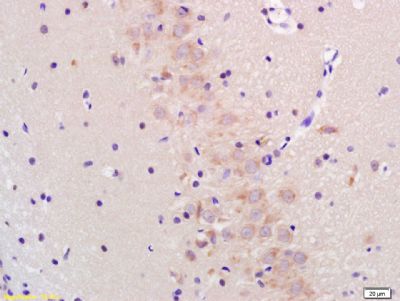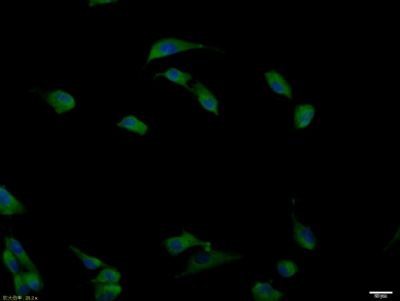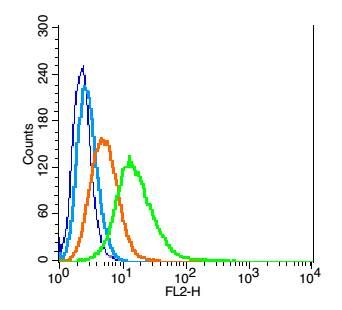[IF=3.73] Ding, Ye, et al. "Study of Histopathological and Molecular Changes of Rat Kidney under Simulated Weightlessness and Resistance Training Protective Effect." PloS one 6.5 (2011): e20008. WB ; Rat.
[IF=4.784] Wang L et al. Radioprotective effect of Hohenbuehelia serotina polysaccharides through mediation of ER apoptosis pathway in vivo. Int J Biol Macromol. 2019 Apr 15;127:18-26. IHSLCP ; Mouse.
[IF=3.858] Li,et al.Silver nanoparticles induce SH-SY5Y cell apoptosis via endoplasmic reticulum- and mitochondrial pathways that lengthen endoplasmic reticulum-mitochondria contact sites and alter inositol-3-phosphate receptor function.(2018) Toxicology Letters. 285:156-167. WB ; Human.
[IF=3.82] Huang,et al.Matrine inhibits the progression of prostate cancer by promoting expression of GADD45B.(2018) The Prostate. 78:327-335. IHC ; Human.
[IF=3.404] Duan M et al. C/EBP Homologous Protein (CHOP) Activates Macrophages and Promotes Liver Fibrosis in Schistosoma japonicum-Infected Mice. J Immunol Res. 2019 Dec 1;2019:5148575. IHF-P ; Mouse.
[IF=3.37] Du, Shaoqing, et al. "SelK is a novel ER stress-regulated protein and protects HepG2 cells from ER stress agent-induced apoptosis." Archives of biochemistry and biophysics 502.2 (2010): 137-143. WB ; Human.
[IF=2.638] Yu-Dong Wei. et al. Dmrt1 regulates the immune response by repressing the TLR4 signaling pathway in goat male germline stem cells. Zool Res. 2021 Jan 18; 42(1): 14–27 WB ; Goat.
[IF=5.391] Zhou L et al. KLF15-activating Twist2 ameliorated hepatic steatosis by inhibiting inflammation and improving mitochondrial dysfunction via NF-κB-FGF21 or SREBP1c-FGF21 pathway. FASEB J. 2019 Oct 24:fj201901347RR. WB ; Mouse&Human.
[IF=4.868] Cui J et al. Acetaldehyde Induces Neurotoxicity In Vitro via Oxidative Stress-and Ca2. Oxid Med Cell Longev. 2019 Jan 9;2019:2593742. ICF&WB ; Rat&Mouse.
[IF=2.197] Luo Q et al. Role of the Death Receptor and Endoplasmic Reticulum Stress Signaling Pathways in PolyphyllinI-Regulated Apoptosis of Human Hepatocellular Carcinoma HepG2 Cells. Biomed Res Int. 2018 Dec 25;2018:5241941. WB ; Human.
[IF=3.076] Tang Q et al. Ferroptosis is newly characterized form of neuronal cell death in response to arsenite exposure.Neurotoxicology. 2018 Jul;67:27-36. WB ; Mouse.


